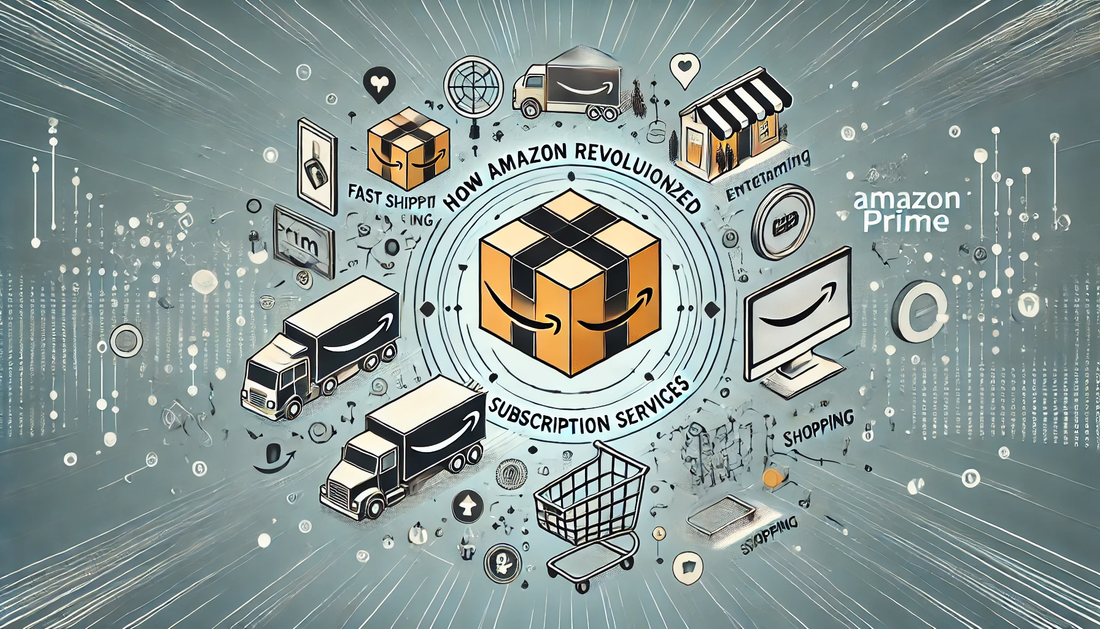When Amazon launched Prime in 2005, it wasn’t just another service—it was a seismic shift in the way we shop online.
Prime transformed e-commerce from transactional to relational, making convenience king and changing customer expectations forever.
What began as a bold experiment offering fast, free shipping for a yearly fee soon evolved into a juggernaut that disrupted industries, captivated millions, and turned Amazon into a global powerhouse.
For startup founders, the story of Amazon Prime is a masterclass in how to revolutionize an industry through innovation, customer-centricity, and a well-executed subscription model.
Let’s dive into how Amazon Prime became a game-changer and highlight key takeaways for startups aiming to disrupt their markets.
Subscription Services: From Convenience to Necessity
At first, Amazon Prime’s promise was simple: fast, free shipping. But Amazon wasn’t just selling convenience; it was reshaping consumer behavior.
Prime transformed occasional customers into loyal subscribers, incentivizing them to make Amazon their go-to platform for everything. By bundling high-value services into one subscription, Amazon made Prime indispensable.
Actionable takeaway: Build a subscription service that offers undeniable value. Once customers rely on your service for essential needs, they’ll stick with you—and keep coming back for more.
The Power of Lock-In: Building a Moat
Prime wasn’t just about free shipping. Over the years, Amazon added streaming (Prime Video), exclusive deals, and even grocery delivery with Prime Now.
These additions created a powerful lock-in effect. Once a customer subscribed, the value they received made it nearly impossible to leave. Amazon essentially built a moat around its customers, keeping them deeply embedded in the ecosystem.
Actionable takeaway: Create a product ecosystem that encourages customers to invest in your services. The more integrated they become with your platform, the harder it will be for them to leave.
Driving Loyalty with Instant Gratification
Amazon knew the psychology of its users. Instant gratification drives loyalty. By offering same-day and next-day delivery, Amazon Prime tapped into consumers’ desire for immediate results. Customers could shop without waiting, fueling an almost addictive shopping experience.
Actionable takeaway: Look for ways to deliver instant or near-instant gratification. The faster your service meets customer needs, the more likely they are to stay loyal to your brand.
Innovating Beyond the Core Offering
While the initial hook for Prime was shipping, Amazon knew it had to offer more. By constantly adding new services—like Prime Music, Prime Reading, and exclusive content on Prime Video—Amazon kept enhancing the value of a Prime subscription.
The added perks made Prime seem like an unbeatable deal, deepening customer commitment.
Actionable takeaway: Don’t stop at your core offering. Innovate continually and add complementary services that provide ongoing value. The more benefits you offer, the more indispensable your product becomes.
Mastering the Data-Driven Experience
Amazon uses vast amounts of customer data to optimize the Prime experience.
By understanding user behavior, preferences, and buying patterns, Amazon is able to offer personalized recommendations and exclusive deals that make customers feel seen and understood.
This data-driven approach has made Prime not just a service but a highly personalized experience.
Actionable takeaway: Use data to anticipate customer needs and offer tailored solutions. Personalized experiences make customers feel valued and increase their long-term loyalty.
Global Domination: Scaling Subscription Success Worldwide
Amazon Prime didn’t stay confined to the U.S. It quickly expanded internationally, adapting to local markets while maintaining its core value proposition.
By tailoring the service to different regions while still delivering the essential promise of convenience, Amazon built a global subscriber base that transcended borders.
Actionable takeaway: Think globally from the start. If your product has the potential to reach international markets, build a scalable model and adapt your service for different regions to maximize growth.
Prime Day: Creating Hype and Driving Massive Sales
Amazon didn’t just rest on its laurels after building Prime. In 2015, it launched Prime Day—a global shopping event exclusive to Prime members.
This not only drove massive sales but also created a sense of exclusivity, giving Prime members more reasons to stay subscribed and encouraging non-members to sign up.
Actionable takeaway: Use exclusive events or perks to create a sense of urgency and drive customer engagement. Limited-time offers and members-only events can boost sign-ups and deepen customer loyalty.
Relentless Customer Focus: Why Prime Continues to Win
At its core, Amazon Prime’s success is built on customer obsession. Amazon constantly refines and expands the Prime service based on customer feedback and data, ensuring that the value it offers remains unmatched.
This relentless focus on delivering what customers want has allowed Prime to maintain its dominance for over a decade.
Actionable takeaway: Stay laser-focused on your customers. Continually evolve your product based on their needs, and never stop improving. A customer-first mentality is the key to long-term success.
Conclusion: The Prime Formula for Startup Success
Amazon Prime’s revolutionary subscription model didn’t just disrupt e-commerce—it created an entirely new standard for customer experience, loyalty, and value.
For startups, the lessons from Prime’s meteoric rise are clear: deliver unparalleled value, innovate relentlessly, and build a customer-focused ecosystem that people can’t live without.
By following these principles, your startup can create its own “Prime moment,” transforming your industry and winning customers for life.










